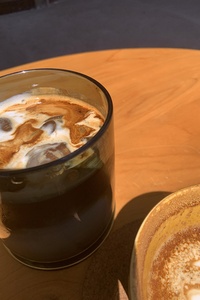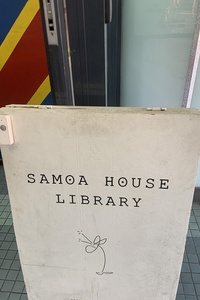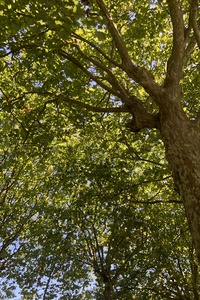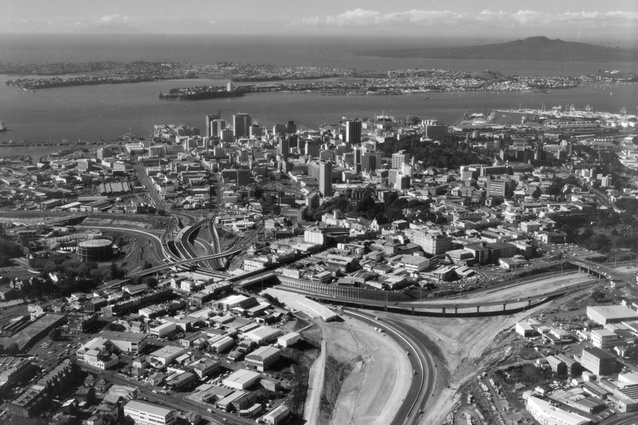Opinion: Twenty minutes in Tāmaki Makaurau
As a sort of homage to the late architect and New Yorker Michael Sorkin and his book Twenty Minutes in Manhattan, columnist Karamia Müller muses on her 20-minute walking commute through the City of Sails.
In my last column, I discussed the reasons for revisiting our collective moral compass as we move through and beyond this COVID time, by rethinking what is considered achievement and, therefore, celebrated in the profession and the industry.

Principal architect of Michael Sorkin Studio, Distinguished Professor of Architecture and devoted New Yorker Michael Sorkin, who championed social justice in the built environment and lived his own practice of architecture as ethics, passed away last year from COVID complications. I am yet to make my way through his writing, something I wish I had done while he was alive. I am not sure why I feel this way, given it was unlikely I would meet him, but, if I were to hazard a guess, I liked the idea of reading Sorkin while somewhere in the world he was carrying laundry up a set of stairs or walking to work.
Laundry and stairs, he described in his book Twenty Minutes in Manhattan as a vicious cycle of schlep: you put off doing the laundry because of the stairs; this then makes the laundry that much more difficult when you can no longer put it off.1 There are a few examples for me that share this inverse relationship, like, say, a magazine column and a deadline, for ‘example’. By discussing such things, he made relatable the architectural experience of the daily as also an opportunity for profound learning of the self as it relates to all the things around it: the bliss that comes with being in commune with a building for a moment, even if the moment is brief, even if the moment is amid hard work. It can feel spiritual and uplifting – something we could do with more of right now.
It seemed fitting then, for this second column, to think about Sorkin by way of my own twenty minutes in Tāmaki Makaurau. Sorkin’s book is organised around and broadly themed by architectural and urban spaces that he encounters on his way to work. He begins with a chapter titled ‘The Stairs’ and finishes with one titled ‘Esprit d’Escalier’, the French term to describe the maddening feeling when you think of the perfect response too late: the wit of the staircase, the clever thing you think of on the stairs and wish you had said before you left the party.
I walk to work as Sorkin did; it is twenty minutes if I don’t stop for coffee so it’s never twenty minutes. As he did, I traverse land and elevational views of a changed and changing central city district; in my case, it is the top end of Queen Street, as my walk takes me from Howe Street, along Karangahape Road, down Symonds Street to the University of Auckland. While I read his book, I come back to this column and consider the act of city-walking as an architectural classroom, where strangers – fellow citizens – teach you how to think about the city in new ways. I did not know this about myself – that I love to watch people use spaces because it makes me more empathetic and considerate as an architectural educator. I am moved by this new self-awareness and think about Sorkin, walking his city as I walk mine.

Sorkin’s day begins with his apartment stairs; my morning begins with the incline of Howe Street. Some of it is gentle but the section I do is enough of a climb to humiliate the unfit biker (me). So, I walk it, even when I am riding to work. About the time I am making a sweaty and undignified ascent, Howe Street becomes a river of Auckland Girls’ Grammar students. These young women are both the future and intensely terrifying. Some start their day with a breakfast energy drink – hardcore. They laugh and chat, filling the plane trees with their early-morning joy.
The school is one of a handful of places in the area that has retained the social geography of Ponsonby in the 1960s and ’70s; it was, then, without reserve, a Pacific place. Since, gentrifying winds, amplified by racism, the Dawn Raids and industry relocations, have swept Pacific communities to South Auckland. Nevertheless, on weekdays, Pacific families undertake what Pro-Vice-Chancellor Pacific of the University of Auckland and historian, Associate Professor Toeolesulusulu Damon Salesa calls an educational migration.2 For this student of the built realm, the spatial lessons are two-fold; it is vital that we challenge gentrification that flattens the demographic of the city and that we ought to ask hard questions of the city’s social geography and its implications. My fellow city-dwellers and I may benefit socially and culturally from the mini-migration of the Pacific community into the city centre but who is sitting in traffic every day to pay such costs of gentrification 50 years later? I am moved by this idea and think about Sorkin, walking his city as I walk mine.
Once you round the corner of Howe Street, you are onto Karangahape Road. One creation story for this place begins with the tupuna Hape who, because of his club foot, was not permitted to sail in the Tainui waka from Hawaiki to Aotearoa. Undeterred, Hape found a way and arrived in Waitematā Harbour riding a stingray before the waka that had deserted him. He performed a karanga to Tāne Mahuta, in doing so naming the ridge line Karangahape.

While creation stories differ depending on who is telling them, this version is generally accepted. For me, the lesson is that transformation is always possible. The ridge line in 2021 could be described as ‘mid-zhoosh’. For the past year or so, sections of the road have been dug up and then laid back down again, to install bike lanes on either side of the road. As an improvement, it is a mixed bag for business owners on the block, who continue to weather the storms of COVID: months of closed sidewalks; weeks of lockdowns. The future, both near and far, is full, still, of uncertainty. And yet seasons, architecture and people keep a rhythm of shared experience that is constant.
Laundry and stairs continue to be a titchy pair. The city keeps teaching us as long as we want to be her students. Plane trees continue to catch the laughter of young people. Gentrification may be a reality but architecture might shape the types of realities by asking the right questions. I think about my own wit of the stairs, the thing I want to say before I leave the party. I am moved by this thought and think about Sorkin, walking his city as I walk mine.
1 Michael Sorkin, Twenty Minutes in Manhattan, Reaktion Books, 2009, p. 9.
2 Damon Salesa, Island Time: New Zealand’s Pacific Futures, Bridget Williams Books, 2017, p. 70.










